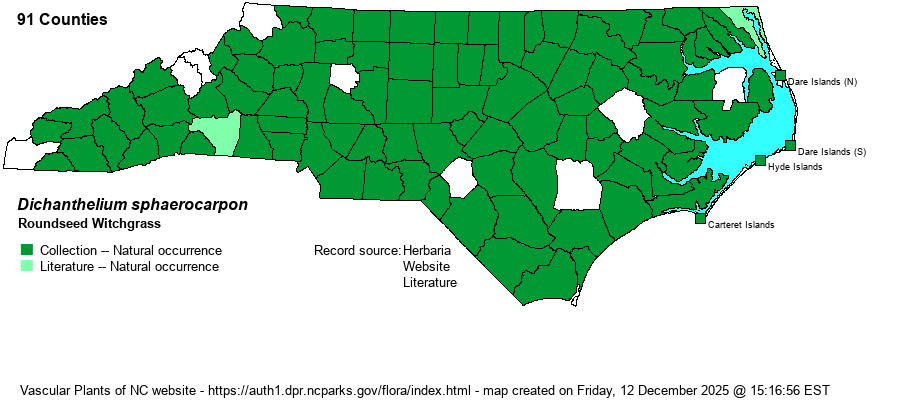| taxonName | relationship | relatedTaxonName | relatedTaxonRefText | relComments |
|---|
|
|
|
|
|
| Dichanthelium sphaerocarpon | = | Panicum sphaerocarpon | Gleason and Cronquist (1991) | |
| Dichanthelium sphaerocarpon | = | Panicum sphaerocarpon | Radford, Ahles, and Bell (1968) | |
| Dichanthelium sphaerocarpon | = | Panicum sphaerocarpon | Flora of West Virginia | |
| Dichanthelium sphaerocarpon | > | Panicum sphaerocarpon var. sphaerocarpon | Fernald (1950) | |
| Dichanthelium sphaerocarpon | > | Panicum sphaerocarpon var. sphaerocarpon | Gleason (1952) | |
| Dichanthelium sphaerocarpon | > | Panicum sphaerocarpon var. sphaerocarpon | Hitchcock & Chase (Manual of US Grasses) | |
| Dichanthelium sphaerocarpon | > | Panicum sphaerocarpon var. sphaerocarpon | Small (1933, 1938) | |
| Dichanthelium sphaerocarpon | > | Panicum sphaerocarpon var. inflatum | Fernald (1950) | |
| Dichanthelium sphaerocarpon | > | Panicum sphaerocarpon var. inflatum | Gleason (1952) | |
| Dichanthelium sphaerocarpon | > | Panicum sphaerocarpon var. inflatum | Hitchcock & Chase (Manual of US Grasses) | |
| Dichanthelium sphaerocarpon | > | Panicum sphaerocarpon var. inflatum | Small (1933, 1938) | |
| Source: Weakley's Flora |

